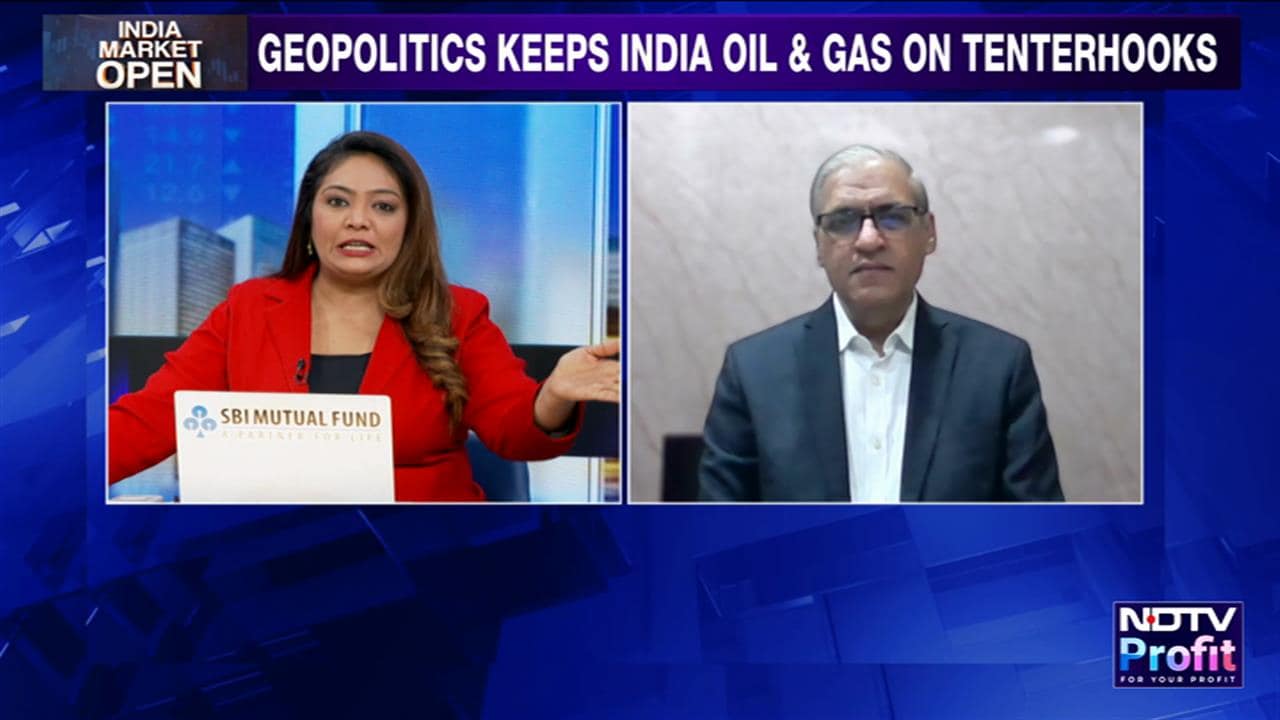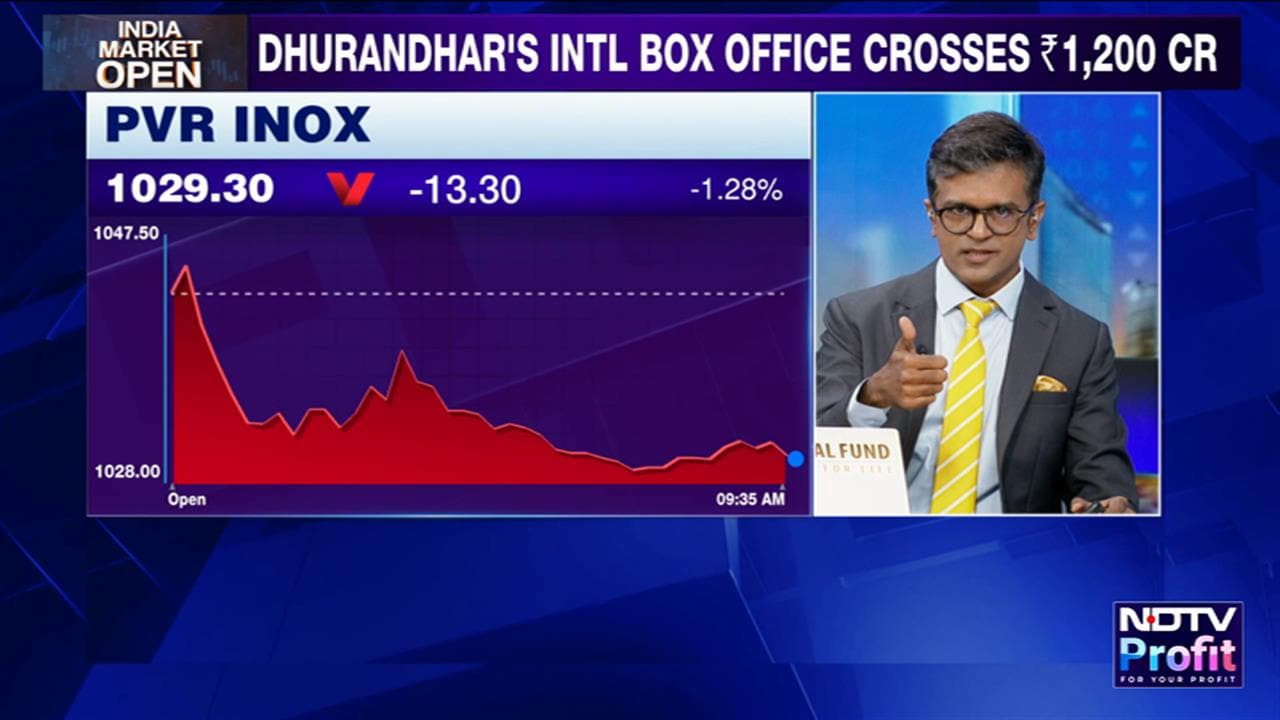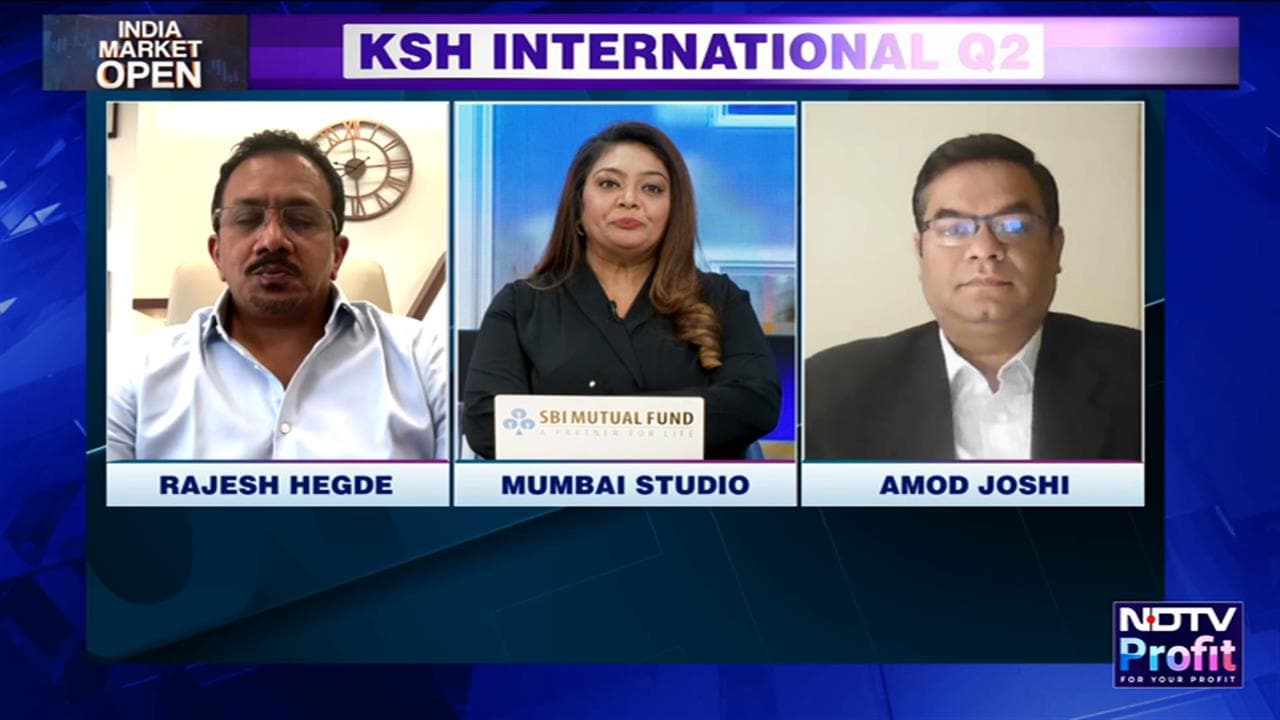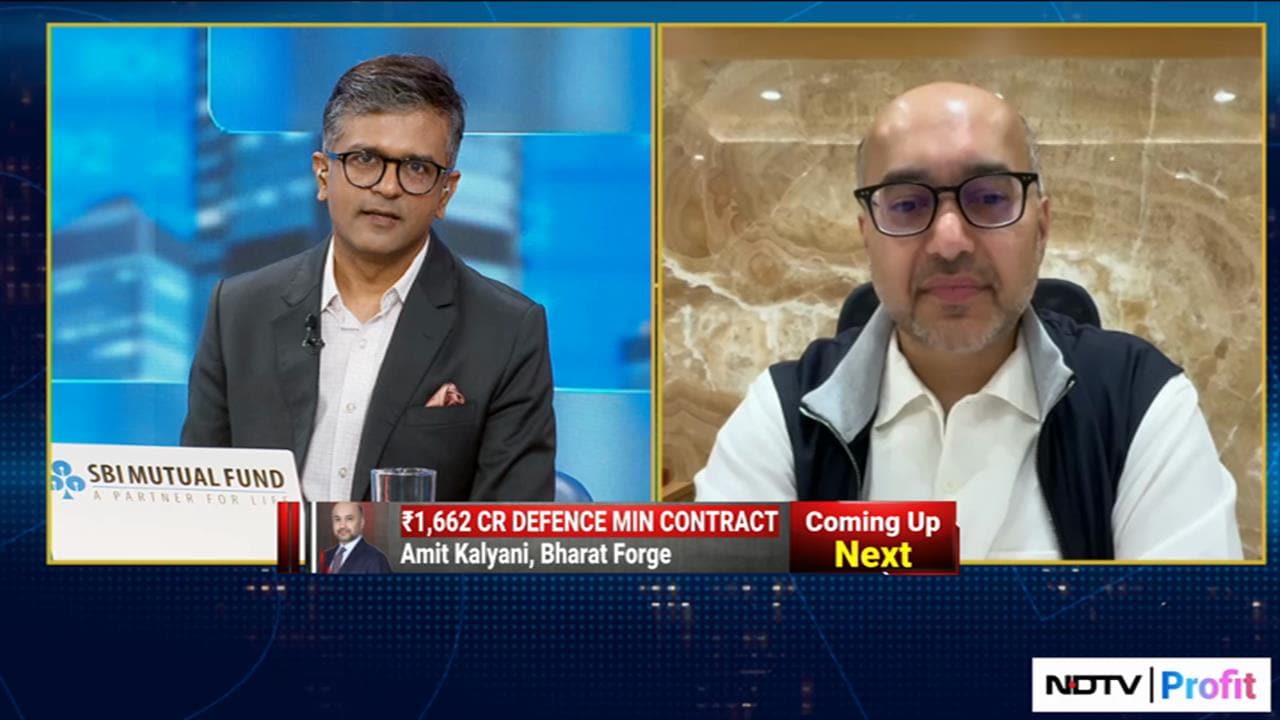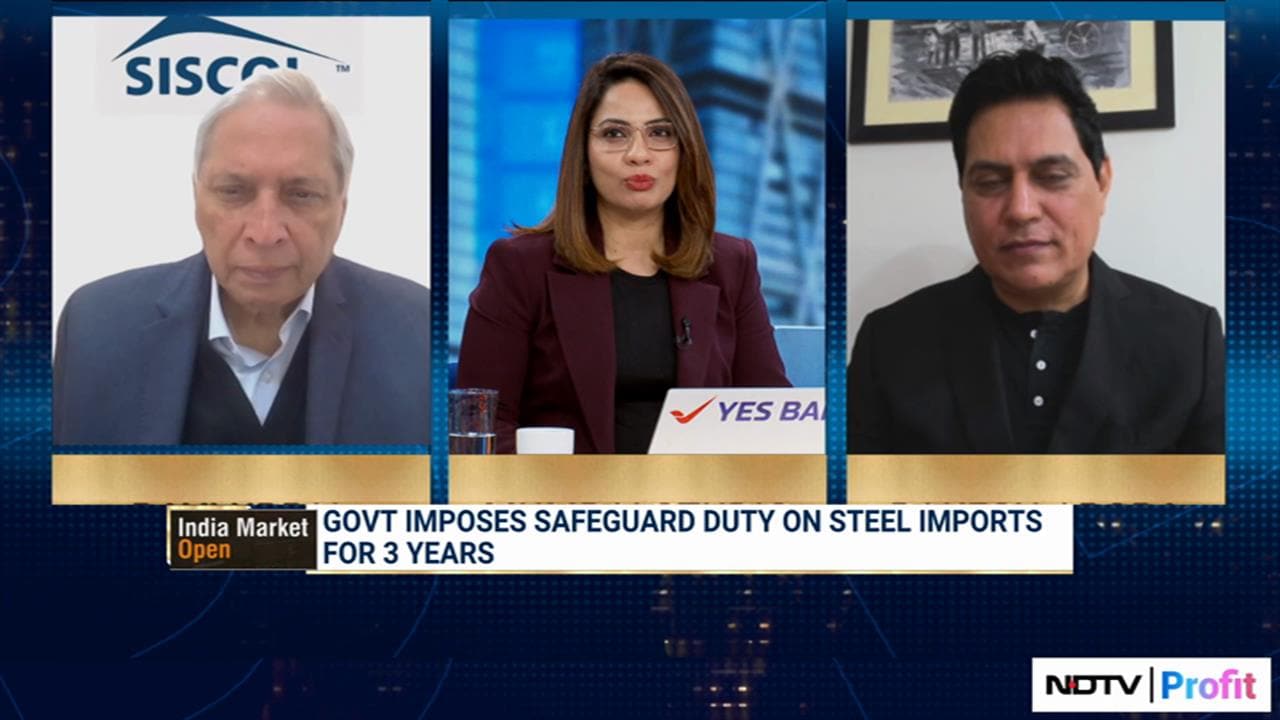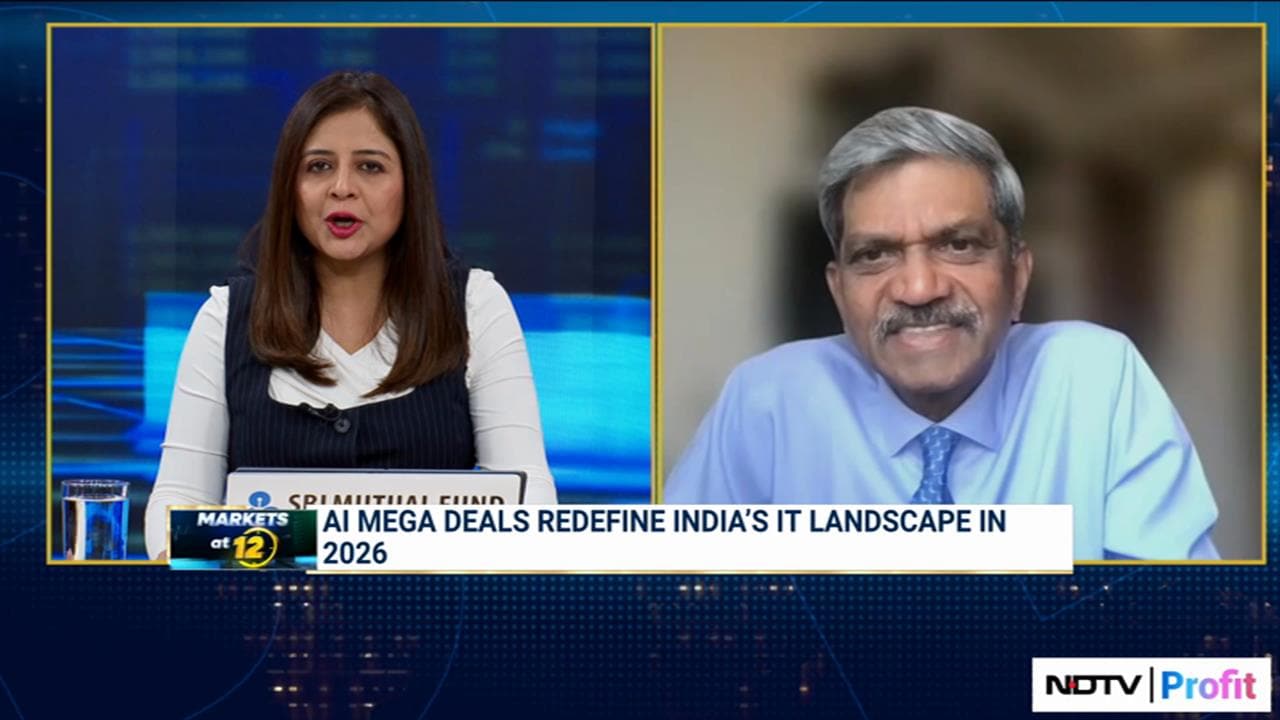
Most flexi cap funds have been focusing on large caps and buying minimal amounts of mid and small caps, according to Ventura Securities Ltd.'s Juzer Gabajiwala.
Typically, flexi cap means the fund manager has a free hand, while multi-cap schemes have a restriction of 25% of market capitalisation, Gabajiwala, director with Ventura Securities told BQ Prime's.
In the past year, small caps and mid caps have outperformed large caps. Currently, many multi-cap funds hold 27-28% mid and small caps. However, very few large caps are found in multi-cap funds, Gabajiwala said.
There are some investors who are clear about their fund allocation, said Arvind Rao, founder of Arvind Rao & Associates. “If they want a mix of large, mid and small in their portfolio, what they would prefer to do is straight away go with large, mid and small funds."
But there are some investors who are still in a dilemma about the funds to invest in. Flexi caps become good alternatives for them, Rao said. “As long as you're happy with going in with a blended fund, then be happy with blended kind of returns."
Watch the full video here:
Edited excerpts from the interview:
Juzer, referring to the Ventura Securities report about the market cap allocation and bias towards large caps for Flexi Caps, how do you think investors should set their expectations when they're looking at portfolio construction? Should the construction of the portfolio of the mutual fund scheme itself be a primary determining factor?
Juzer Gabajiwala: Just take a step back, the reason why we looked at this basic allocation on the market capitalisation. SEBI had introduced standardisation of the market cap in 2017... At that point of time, most of the funds had Multi Cap and prior to that, everybody had a different approach to how they were classifying the market cap of the stock. What we did is that we tried to look at Flexi Cap because that was one category which actually was spun out of the Multi Cap and Flexi Cap, there was some confusion and because of that now we have two categories called Multi Cap and Flexi Cap. Typically when you say Flexi Cap basically what we are giving the fund manager is a completely free hand that he can decide whether he wants to be in small-cap, mid-cap or large-cap. So, he has full flexibility in terms of where he wants to invest. In Multi Cap, there's a restriction on 25% of market cap but what we did also was that we took one year of data so that there is not any recency bias…We took one year data of the portfolio of most of the schemes and mind you, this has got nothing to do with what the performance can be. We are not talking about any scheme performance here right now, we are only talking about the portfolio construct. What we saw is that on an aggregate basis, most of the Flexi Cap funds have been more towards the large cap and they are very minimalistic to mid-cap and small component to small-cap.
So, it actually questions us whether we should have a large-cap allocation to a person that is better off doing a large-cap fund or whether he should be doing a Flexi Cap fund. That was one of the reason why we tried to do this exercise. Is the fund manager using the discretion, because we all have seen that mid caps and small caps have rallied in the last one year and large caps have not. So, was the fund manager doing that type of switch or what they were doing.
That ratio stayed very close to that one-year average and it continues to remain that way, despite the kind of run-up that you've seen in small-cap and mid-cap, which indicates that they have taken this as a strategic conscious decision. So, Arvind Rao, the question to you therefore is am I better off taking an allocation towards large-cap? Suppose that I have the risk profile that suggests that I should have only 50% allocation towards large-cap and I want to split the rest between mid-cap and small-cap. Should I choose to invest individually into large-cap, mid-cap and small-cap schemes?
Arvind Rao: So, philosophically here it depends upon the investor's mindset because when we talk to people we have found that this is the same dilemma whether you take a ULIP or you take a term plan plus MF, because there are people who are very comfortable with having clear allocations. If they want a mix of large, mid and small in their portfolio, what they would prefer to do is straight away go with a large, mid and small funds. But then there are always this set of investors who seem to want a little extra from the fund that they are in and they are a bit confused in terms of whether they should be in large, mid or small.
So, for these set of investors, such a category of fund—whether it's the Flexi Cap makes good sense because then they know that they have their leg in most of this. So, I mean a point that generally we make to these investors here is that while you do this, it's not right to have expectations that you will get returns which probably a plain large, mid or a small will do. So, as long as you're happy with going in with a blended fund, then be happy with blended kind of returns. So, the returns should be slightly higher than a large cap fund but may be lower than mid and small. So, as long as an investor is comfortable with that, then a Flexi Cap makes sense in their portfolio.
Juzer, you've looked at large-cap, mid-cap and small-cap biases as well in these schemes. You have found that within these as well, even if it's a mid-cap fund, there is a certain amount of large-cap bias, or there is a certain amount of mid-cap bias or broader market bias in the large-cap funds as well. How do you take that kind of information to make a selection if you're looking to invest in an equity fund?
Juzer Gabajiwala: So, the major thing was that we have seen quite a lot of Flexi Caps which have been underperforming, and that is on the basis of doing this research. Another part which is there in our report is that the perception, there are many perceptions which we have in our mind. Most of the investors they actually think that some companies are perceived to be a large-cap or mid-cap, but in reality it could be a small-cap.
So, a classic example being, let us take Pfizer. Pfizer is perceived to be a large-cap but is actually a mid-cap and this also keeps on undergoing a change. So, typically, for quite some time, Bombay Stock Exchange itself was a small-cap stock. It's only that now because it is run up that it is more or less likely to get classified as a mid-cap stock. Having said that, now when we are giving flexibility to a fund manager, then I would expect him to use that flexibility. According to me, then it makes more sense if somebody is looking at a Flexi Cap fund, is he not better off by going into a Multi Cap fund because, at least, he will have a 25% exposure to a small cap and 25% exposure to a mid cap and then, whether he has got 50% exposure to a large-cap, it will be still lesser than a Flexi Cap fund.
The Multi Cap funds by and large over the last year had a large-cap allocation of 41% and as of the latest available data, they're very close to that mark, which is 38% or so, which kind of captures the kind of rally that we have seen over the last several months.
Juzer Gabajiwala: More or less, they're also hugging more towards the mid and small-cap you know, just a percentage, two points here and there, you will see around 27 or 28% in mid and small-cap.
So, what you are saying is instead of Flexi Cap, if I'm looking for a wide spectrum of allocation and allowing the fund manager to go to various schemes or rather market capitalisation, I should choose from Multi Cap.
But, a counter to that Arvind would be that there is in the event of a downturn, a specific amount of money that has to be put into small caps, a minimum amount that has to be put into mid caps. Now, generally, we'll see that the broader end of the spectrum tends to lose quite a bit of ground. Of course, it gains also equally fast. But then, there is a certain amount of risk associated with that. Is that something that should cause you to pause or do you think this is par for the course for somebody that's looking for a Multi Cap allocation?
Arvind Rao: Giving a perspective to the way Juzer put the data and the analysis there, people who have in the investor maturity journey, they could start with large-cap funds and before they go into mid and small, they could graduate to Flexi Cap. Once they're able to gauge their risk appetite and are more comfortable with going beyond the large-cap is when they could straight away jump to Multi Cap funds also, because then they would have spent some time in the market, understood the way mid caps, small caps performed in the upside, or gave a lower returns on the downside.
Then it makes perfect time where they could look at slightly more defined allocations the way Multi Caps work. So, in that sense at least there is no expectation mismatch or there is no investor disappointment. Because normally you see that allocations to mid and small start growing higher on the back of rallies in the mid-cap and the small-cap space and typically, as market behaves whenever there is a rally it is followed by downside. So, generally investors in mid and small-cap funds are the disappointed lot because they look at the performance of the last few months or years and they get into these funds and then it is followed by a lull. So, getting exposure to Flexi and then Multi will help them to have the best of a little bit of risk as well as better returns than large-cap after gaining some maturity in the market.
Would you be able to give me a few schemes that you have looked at over the last whatever period of time that people should consider? Not just in the Multi Cap category. I've looked at your data and you've pointed out that Quant, for example, has a smaller large-cap allocation. So, in that sense, similar to a Multi Cap though it has a larger derivative play that it does. Tata Flexi Cap has a smaller allocation towards large-cap and therefore is similar to Multi Cap. So, from that perspective, it's kind of doing what a Multi Cap scheme is currently doing. But it is in that Flexi Cap category, and therefore, it has more flexibility.
Juzer Gabajiwala: Actually, the more important point was that we were just trying to figure out over here as to how the fund manager has been thinking, what was his thought process,… what is the style the person is following.
HDFC Flexi Cap has 80% in large caps, so he is becoming more large cap bias. The Quant is becoming more active. He's a very, very active fund manager. Tata is also trying to be a little bit more active-oriented. So, we are just trying to bring out whether there is some bias towards in terms of the investing pattern. Like even when we see Kotak, it has got a large and mid-cap bias, so he's around 70% in large-cap and more in the mid-cap space and less in the small cap. So, we're just trying to bring out how the fund manager is acting in terms of what he's doing.
Having said that, in terms of recommendation, we generally cannot give any specific scheme recommendation. I can give some pointers … that specifically, when a person is looking at Multi Cap or Flexi Cap as a category, the fund allocation is also important and whether it fits into the mindset of the investor, whether he would want somebody to be small-cap oriented or mid-cap oriented, or whichever, and take a decision based on that rather than just plainly on the basis of just going by the returns. Because at the end of the day, you're taking a call for the future, but the returns are based on the past. It needs a fund manager continuity because in these funds, you require the fund manager to be a little bit more agile so that he is not only able to take a specific stock call, but also has to take a sector call and has to decide how much he should be in small-cap, mid and large-cap.
Arvind, would you be able to share any recommendations. I will leave it to you whether you want to talk about Multi Cap and Flexi Cap, but also we were talking about whether or not an investor should look at mid, small and large caps and you made your point about the progression of an investor's journey.
Arvind Rao: Yes, because as Juzer rightly put it, recommendations is something which is very tricky, because by the very nature of these funds, names could vary at different points in time because data today looks something else and maybe three months later, data would look something else. But more than recommendations, in the Multi Cap segment, I find that there is a Nippon Multi Cap Fund which I like and in the Flexi Cap space, in the data which Juzer has shared, I like HDFC Flexi Cap Fund.
If you go to the fact sheets of any of the schemes that you are considering, you will be able to see the portfolio selection of each of these funds. On the basis of that, you can actually make a judgement as to whether or not you're getting what you intend to get.
Moving on to the second leg of this conversation, I want to focus on SIP. It seems like the SIP cancellations as a percentage of the gross inflows into SIPs has reduced to an 11-month-low and it's at 50%. It's still a large number. But does that give you the indication that perhaps people are listening to the advice that people like you are giving to say that you need to stay longer.
Juzer Gabajiwala: So, I don't know whether investors are listening to us because last one year returns have been excellent. Or are they looking at the returns and then they are continuing the SIPs. Today, that is one of the big challenges which we also face where the expectations of investors is very, very hard and unfortunately, I don't think most of the investors have understood how the SIPs function.
We have also come out with a report on that and specifically, when there were a lot of these cancellations because we also run a large SIP book. For me personally, I always look at that mutual fund is one of the best ways that you can invest through an SIP, but cancellation is a big cause of concern. I believe that a lot of cancellations are just happening because investors are not clear in terms of what is required in an SIP and what they need to do.
What is that?
Juzer Gabajiwala: The simplest thing is about the tenure, the tenure of holding. This is an abnormal return which you have bought for this one year when the markets has just run up. Otherwise, if you ask me, I mean in one year, where typically your average SIP investment is just completed six months, because one instalment has gone for 12 months and one instalment just may be gone yesterday. So, your actual average investment is six months and you expect your return to be a double-digit or higher double-digit is just not going to be possible.
Investors are not looking at the value of the investment. The corpus is very important, you should start looking at it that how your corpus is getting build up. So, it's like how the insurance companies they sell and how mutual fund is sold. In mutual funds, we always talk about the return, but in insurance you'll see that most of the insurance companies will say that your corpus will become this much, they never talk about the percentage because it will be very much lesser than what is happening on the equity side.
It comes back to setting expectations. But there is also the argument to be made which is that timing the market can be beneficial if you can do it. Take, for example, what Juzer was pointing out where you have an SIP for a year and effectively, you've had this running for six months. But there are people who will say that I have an SIP for six months and then I'll hold off because I think markets are too expensive. Then, at the end of six months, when I see a fall I will deploy that six months together. Is that the right approach?
Arvind Rao: Interestingly, I agree with your view also on that because timing, whether right or wrong, that wisdom is always in hindsight when it comes to market. So, we definitely meet these kind of people who say that when markets are rising, I will hold on and then I'll push in the full amount when markets are at a low, but the next question that goes to them is how do you decide which is the low. So, it is futile because even a few weeks back, when markets were on the correction mode, the human psychology says that whenever it is going down, I think there is a little more room left for it to go down and you wait and then the market goes up. So, it is actually futile and the whole point of SIP is to get discipline in relation to the investments and discipline implies that the investments have to go on a monthly, weekly, quarterly, whichever basis the investor is comfortable with, it has to go on.
Whatever is the market, whichever level it is at, it is futile to track it. Going with the way you mentioned, that at 50.7 the cancellation rate it's still lowest in 11 months. But the same report which I was checking was also showing that during these 11 months, the highest number that it hit was 67.5. Now, like Juzer rightly mentioned, whether it is the returns that is holding people on or if I were to be too optimistic, I would think that people are now understanding that spending more time in the market or giving your investment slightly more time gives them better results and they don't get nervous when they see a small bout of correction or dropping in price happening. They are happy that if their SIPs continues during this time, they are actually helping to build a larger corpus as per whatever timeline they have chosen for their investments.
Juzer, what's the average good holding period according to you for an SIP. Of course, it is goal-based, but at the very least how much should it be?
Juzer Gabajiwala: Basically, if you ask me, the very least it should actually be, your SIP should be running for 15 years. Because you want to create wealth, you want to create long-term wealth, so are you going to be excited with a 20% return or are you going to be more excited that your corpus is Rs 2 crore.
Rs 2 crore is an arbitrary number. But having said that, I take your point. But for 15 years. Arvind, what do you think?
Arvind Rao: 15 years is a dream but I think seven to eight years is what we generally peg as the minimum because anything lower than that, one should not do an equity SIP because equity requires that you have to be in the market for a minimum seven years.
Juzer Gabajiwala: When I say 15-year SIP, your average holding is still 7.5 years.
You talk about rebalancing of a portfolio and strategically rebalancing at that. So, when you see a dramatic change in the asset allocation that you've determined and you use that mathematical formula to enter, you automatically enter at lows and you sell at highs. Now, is there a case to be made to make lump sum investments strategically along with your SIP, and therefore, should you use your cash reserves or whatever you have to do that?
Juzer Gabajiwala: Lump sum investments can be done when … suddenly you find that there is a sharp fall in the market.
The more important thing is going to be what is your time horizon for holding that money. So, if you are very clear that you don't need this money, if you have done something in lump sum, then at that point of time, if you're going like a large cap fund, the minimum holding period should be between three to five; if you're looking at a mid-cap fund, it should be between five to seven; and if you're looking at a small cap, your ideal time horizon should be more than seven. In between, if you make money and you get out that's a different matter, but mentally you have to be prepared for these time horizons. That is very important.
Arvind Rao: I totally agree, if there is some periodic payments that you get and there is a sharp fall, then SIP combined with lump sums make great sense.
Watch LIVE TV, Get Stock Market Updates, Top Business, IPO and Latest News on NDTV Profit.









